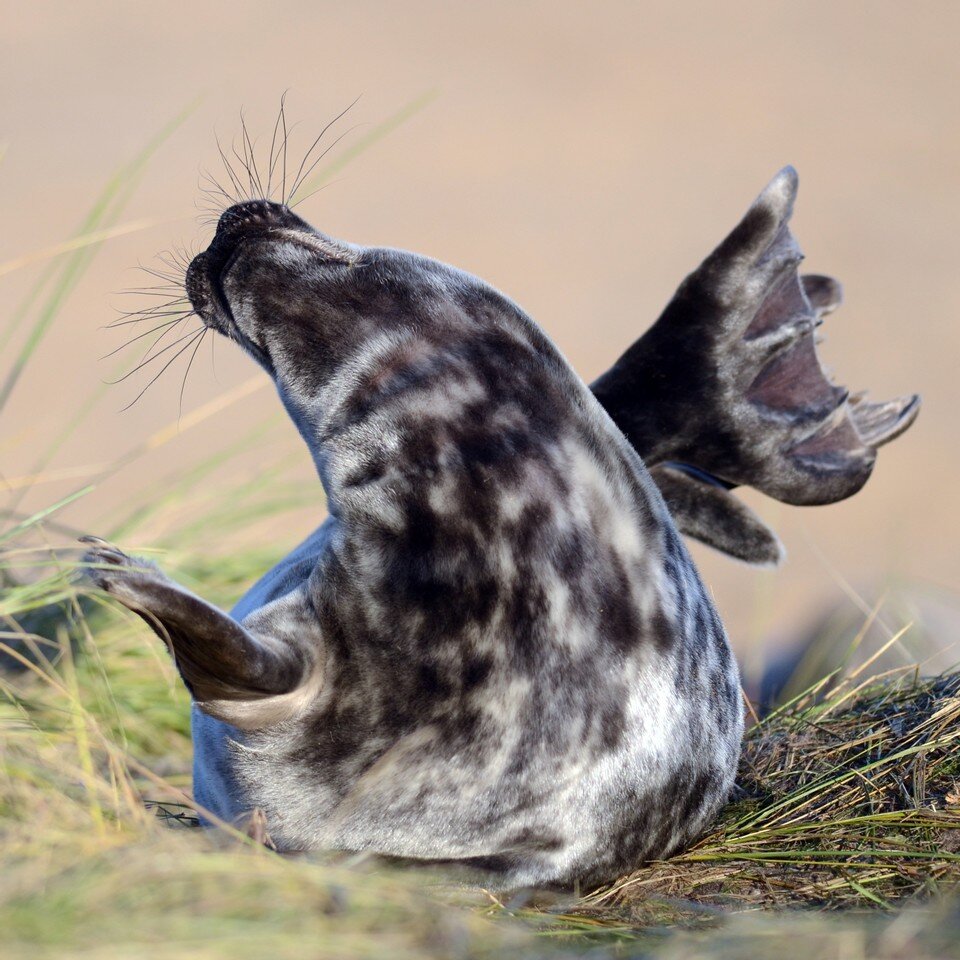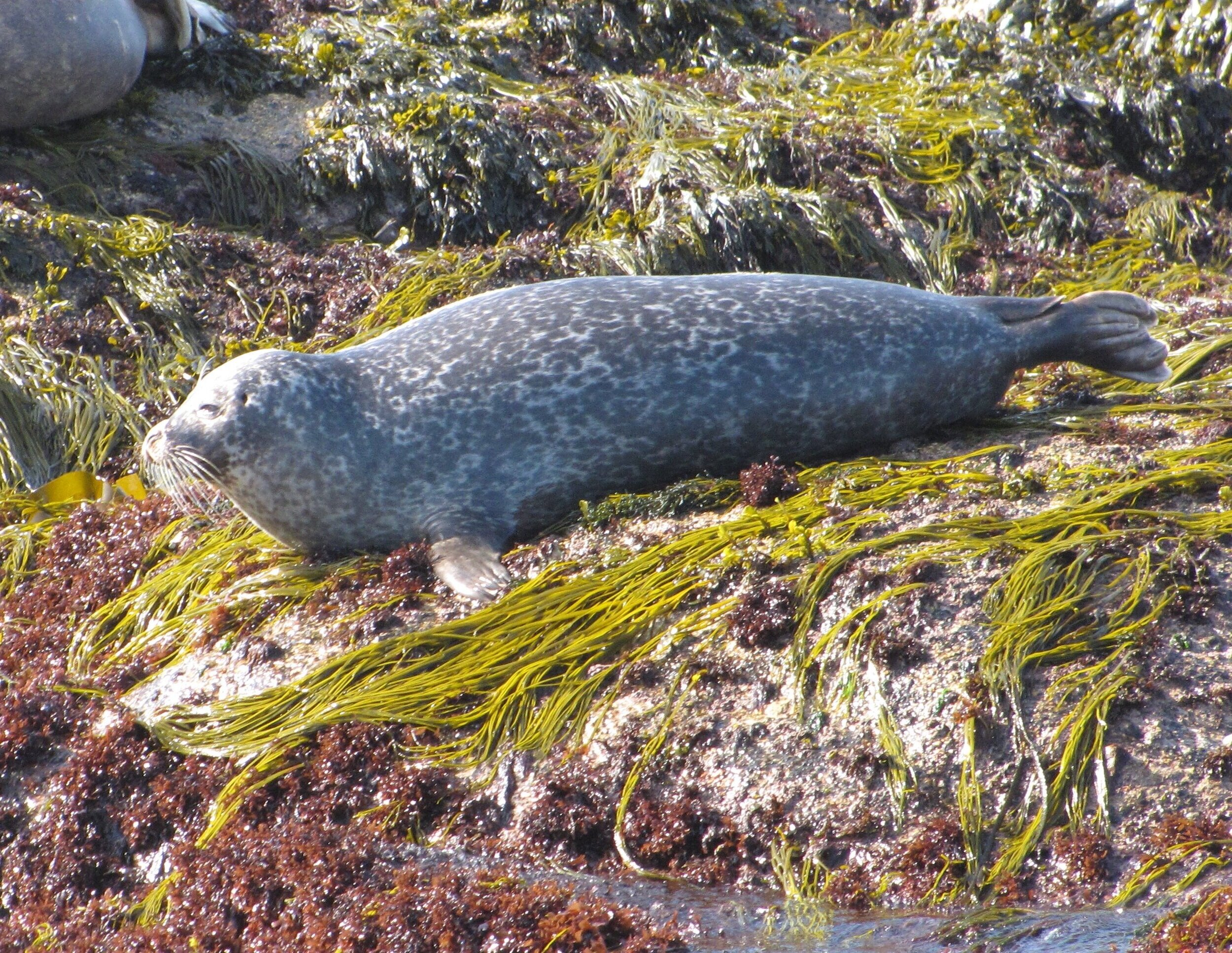
A Natural History of Seals
The UK is home to two globally important seal populations. Over a third of the world’s grey seals live in UK waters with 88% of these in Scotland. Approximately 30% of European harbour (common) seals are found in the UK with ongoing declines in several harbour seal populations in Scotland.
Grey Seals
Grey seals (Halichoerus grypus) are Britain’s largest land breeding marine mammal. Males are thought to live to 25 years and females over 30 years. Grey seal males average 2.3m, with larger males up to 3 metres long and weighing between 105 and 300 kilograms. Females are smaller growing to up to 2 metres long and 180 kilograms. Pups are born between August and December and suckle for around 3 weeks. At this time their long white fur is replaced by a shorter patterned coat.
Pups
Grey seal pups are fed for just three weeks tripling their body weight from 10 to 40 kg. Mums must wean and leave their pups to avoid starving themselves having already passed a third of their body weight to their pups. Most males are non-breeding with dominant males becoming beach-masters who get to mate with the females on his patch.
Common Seals
Common or harbour seals (Phoca vitulina) are smaller and less robust than grey seals. They can reach about 1.5 m and up to 100kg in weight. They tend to be found in smaller groups up to 20-30 animals and pups are born mostly during June and July. They are born with brown coats and are ready to swim. Common seal males live around 20 years with females reaching 30 years.
The easiest way to distinguish between the two seal species is to look carefully at their heads. In proportion to their bodies. Common seals have relatively small heads with clear foreheads down to their shorter snouts with snub noses. From the front, their heads are rounded and their nostrils form a distinct ‘v’ shape. In contrast, grey seals have much larger heads, with strong, flat profiled noses, which become more romanesque as they get older. From the front, grey seals’ heads form a vertical oval shape and their nostrils (except in juveniles) are much more parallel. Common seals’ heads appear more cat like, whilst grey seals’ heads more resemble dogs, looking more like Labradors.

Seals are well adapted for life on land and in the sea. A blubber layer between 6 to 10cm thick in adults provides insulation and dense fur helps to reduce wind chill on land. Most heat is lost through a seal’s extremities, its face and flippers, which have little blubber. A dry, hauled out seal being splashed by a rising tide feels the cold water most at its extremities, which results in ‘bananaing’. This is a characteristic behavioural reaction, where the seal lifts its head and tail up in an arc at the same time! This keeps a seal’s sensitive bits out of the cold water for as long as possible.





